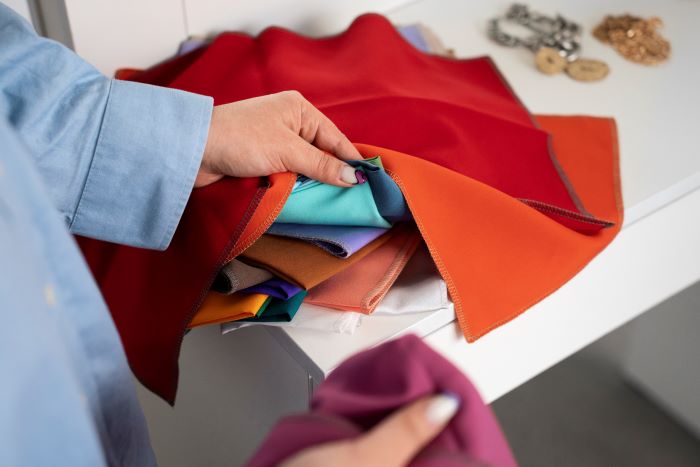The fashion industry has been growing rapidly over the recent years. This has made the textile industry thrive in a progressive manner. The fashion brands are trying to keep up with the evolving progress to maintain their credibility in the competitive market.
Fashion industry insights state that during this transformative phase, the customer behaviour keeps on changing and that defines the dynamics of the textile industry. By staying informed and working alongside customer preferences, we are seeing a new era of fashion industry in the making.
Let us look into how fashion brands can elevate their position with the global textile trends 2025 and shape the fashion industry towards greater success:
Here's an overview of the key trends shaping the industry:
-
The Sustainable Future:
The environmentally friendly theme is clearly trending in 2025. There is an understanding to preserve the natural habitat by using eco-friendly materials such as recycled polyester or organic cotton to reduce the harm caused to the environment.
The youth of today, especially Gen Z, prioritise sustainable materials as they are becoming cautious of what harms the environment. This presents a new way for fashion brands to keep up with the growing trend in the favour of their buyers, trying to aim for their satisfaction. -
Textiles And Technology:
The global textile trends 2025 is not complete if technology isn’t in the list as a game changer for the industry. Fashion brands are integrating technology into their production techniques through digital design and AI. These tools help them to act swiftly and respond to customer preferences along with the current market trends.
The fashion industry insights about the introduction of technology in the industry has shifted the progress further by quicker consumer engagement and satisfaction. This increases conversion rates of respective fashion brands, thereby increasing their brand value.
The digital fashion and virtual experiences have enhanced the global textile industry and when it comes to the global textile trends 2025, technology is at the top of the list.
-
Recycling Strategy:
It is more common for brands to use the process of reuse and recycle as it is one of the active global trends since a decade. But, even today, the process is widely followed with more enthusiasm. The global textile trends 2025 inculcates the process of reuse and recycle and if brands haven’t adopted it yet, they can add it to their branding strategies as a starting point towards driving positive change.
For example, Adidas initiated the use of upcycled ocean plastic in 2015 by making sneakers and apparel from it. They have also stated that over 90% of their products will contain only sustainable materials as of 2025.
This is what makes the brand a people's favourite as it caters to the benefit of the environment and the people. So, every fashion brand must take cues and begin their own initiatives.
-
The concept of customisation:
The latest trend of personalising the products is also taking the textile industry by storm. The global textile trends 2025 also include customising the product as per the wants of the customers. This allows them to get a hint of personal touch that makes way for enhanced satisfaction.
This trend is on the rise due to advancements in technologies and design tools that enable designers and manufacturers to understand the demands of their customers at a deeper level.
The availability of different options when it comes to style, colours and sizes acts as a magnet attracting customers to purchase a more personalised product. -
Economic pressures and textile industry:
The textile industry is determined by how the global economy functions in times of uncertainty. The customer spending patterns are changing rapidly. The economic uncertainties also pose risks for fashion brand owners that include inflation and economic fluctuations among others.
Hence, at the economic front, it is essential for fashion brands to reevaluate their values and supply position in the market. This action can make them work according to the dynamics that shifts the market situations. So, the global textile industry fashion brands must take small steps to ensure they sail smoothly in the competitive market world.
Conclusion:
In 2025, fashion brands should adopt trends that feel like a breath of fresh air. Today, it is more about a consumer-centric approach that brings sustainable practices, technological innovations and personalised experiences together to build a brand that doesn’t only lasts, but also be remembered as a top of the mind recall.
When you stay close to the industry developments and adapt accordingly, you can ensure long-term success in the evolving global textile landscape.






